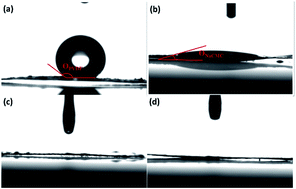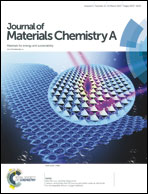Carboxymethyl cellulose binders enable high-rate capability of sulfurized polyacrylonitrile cathodes for Li–S batteries†
Abstract
Li–S batteries have attracted ever-increasing interest in recent years due to their high theoretical specific energy. However, the cycling and rate performance of the sulfur cathode are seriously hindered by the notorious polysulfide dissolution and its low conductivity. Sulfurized carbon materials containing covalently bonded sulfur chains have shown relatively better stability for Li–S batteries. In this study, we report the improvement of the high-rate performance of sulfurized carbon cathodes derived through vulcanization of polyacrylonitrile. We compared sodium carboxymethyl cellulose (NaCMC) with poly(vinylpyrrolidone) (PVDF) as cathode binders for the sulfurized polyacrylonitrile (SPAN) electrode. The SPAN cathode using the NaCMC binder showed a capacity of 938 mA h g−1 after 450 cycles at 0.9C rate (1C = 1675 mA h g−1) and a capacity of 677 mA h g−1 at 5C rate; both performances are much superior to that of the SPAN cathode using the PVDF binder. This result illustrates the feasibility of using water-soluble oxygen-containing binders to improve the C-rate performance of sulfurized carbons.



 Please wait while we load your content...
Please wait while we load your content...